The triumph of modern academism and the few brave Photo Quai rebels
A week ago I visited Photo Quai, the collective exposition of non-occidental photographers along Quai de Branly until the 25th of November 2007.
It was a beautiful sunny day, so rare in Paris once autumn slightly falls and winter begins to live. The air was icy, but the blue sky lightened the eyes. The sun was pleasantly warm on face and the trees alongside the Seine were sparkling of a bright and brilliant yellow. There also were a beautiful atmosphere: a gypsy who played incessantly the accordion, the pontoons were floating moving some wave in the river, the elegant palaces of this side of the city. I always loved the exposition in the street, also the bourgeois exhibitions on the grates of the Luxemburg Park.
The pictures exposed for Photo Quai are high leveled. Apart from that, there’s a persisting, strong sensation of repetition of codes and already seen. It is the style of reportage aiming at art. That is no picturesque images of far countries, no information picture or journalistic pictures and at the same time almost anything about the sterile contemporary art photography so in vogue during those years.
Right conjunction, but I can’t forget the impression of a certain academism. The majority of the pictures uses what became the contemporary language: dark, nightly, under exposed, moved, out of focus images shot close to the ground, with an ugly composition, a flat and frontal framing, and so on.
The problem is that, in the majority of the cases, those languages are not used expressively, but rather they cover the image with a certain sensation of modernity, just to distance from pure reportage, which is seen some way with contempt. I’m disappointed because the abuse of those stratagems, little tricks which have been seen over and over again, that should make an original and personal image actually make it a stereotyped and scholastic one. This phenomenon recalls the beginning of the past century, when photographers had to take pictures similar to paints and drawings as much as possible; otherwise “it’s not art”. Apart from some genius of pictorialism, the majority of the pictures looked like worst paintings of failed artists, and they were scholastic anyway. Direct photography, and the photographical research as expression without artifacts, has been the mother of many wonderful pictures as pictures itself, without any stylistic embroidery that numbed photography before. I think that nowadays, analogically to late pictorialism of almost a century ago, pictures are wrapped into artifacts that should make them modern, personal and “arty”, but they rather create an opposite effect.
This critic is moved for the collective, a lots of authors pierce this already seen and academic veil and their picture will be impressed in hearts.
I particularly appreciated the characters and trees emerging from the Arabic fogs by Aziz Ayash; the opposition between traditional and adolescent camouflage of manga lovers in Zeng Han and Yan ChangHong work; the gigantic prints of bicycle and corps falling into water of Wang Ninde; some of the fake death photographed by Gerardo Montiel, but obviously this was clearly in super-classic Holga style. I envied Luo Dan 18000-miles-travel on the 318-street that runs through China. I can only imagine meetings, landscape and incredible location he had the opportunity to live. I admired the beautiful images of Paranapiocaba, the ghost village constantly immerged into fog, by Lucia Guanaes; the splendid artic panorama by Tiina Itkonen, which awakes in my chest location, sensations and ices that I do know; the Syrian landscapes of Mohammad Haj Kab, who feels like a failed painter and regrets not to be a Bedouin or peasant.
Here’s are three more author that I was deeply enthusiast from:
- Mehrad Naraghi and his nightly nightmarishly landscapes; dark atmospheres and blurred pictures, confused images that seems to be overexposed. Skeleton trees emerge from the darkness, tending their claws towards the far lights of the cities under the embrace of terror. The walls seem like moving, trying to run away. Reality falls into pieces on the spectator. Images are expressive and intense, and finally the language I was criticizing ahead has a precise and functional aim.
- Wang Gang realized an impressive reportage on old and young people of the Yi ethnic group. Here’s the example of a brilliantly communicative photography using only the instruments proper of this media. The fascination of this artist is not about the interventions that scramble and dirty the image, rather about the terrific intensity of his subjects, the moments he caught, the right expression, the perfect framing. The result is pictures that will be in eyes and hearts for a long time.
- Least but not last, Armin Pflanz photographed the prisoners of Cap prison, in South Africa. Scarfaced or tattooed man faces where writes are a geographic map of the suffered and inflicted violence. Eyes that pierce the paper, images that directly strike you. It is getting rarer and rarer to see something like this.
In the complex, except for a certain mannerism in the background, it is a fine exhibition that allows to see non-occidental photography, to discover unknown authors that reveals often a wonderful surprise.
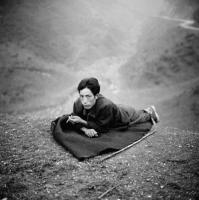
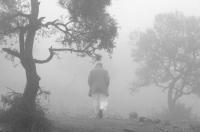
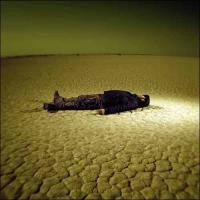
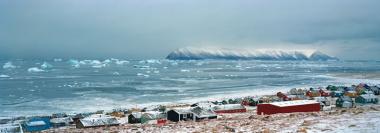
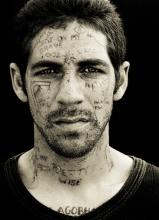





Camera Obscura » Le città oscure di Mehrdad Naraghi
said, July 30, 2008 @ 6:25 pm :
[...] Naraghi è un giovane fotografo iraniano che ho scoperto l’anno scorso durante la Photo Quai. Sono stato immediatamente affascinato dalle sue fotografie della città la notte, buie, confuse, [...]
La Cina di Yann Layma
said, January 4, 2009 @ 11:08 am :
[...] anche stratagemmi stilistici vari in fase di ripresa, come ho già in parte discusso a proposito di Photo Quai e dell’accademismo moderno. vari in fCome se fare semplicemente fotografie non fosse più sufficiente, come se fosse [...]